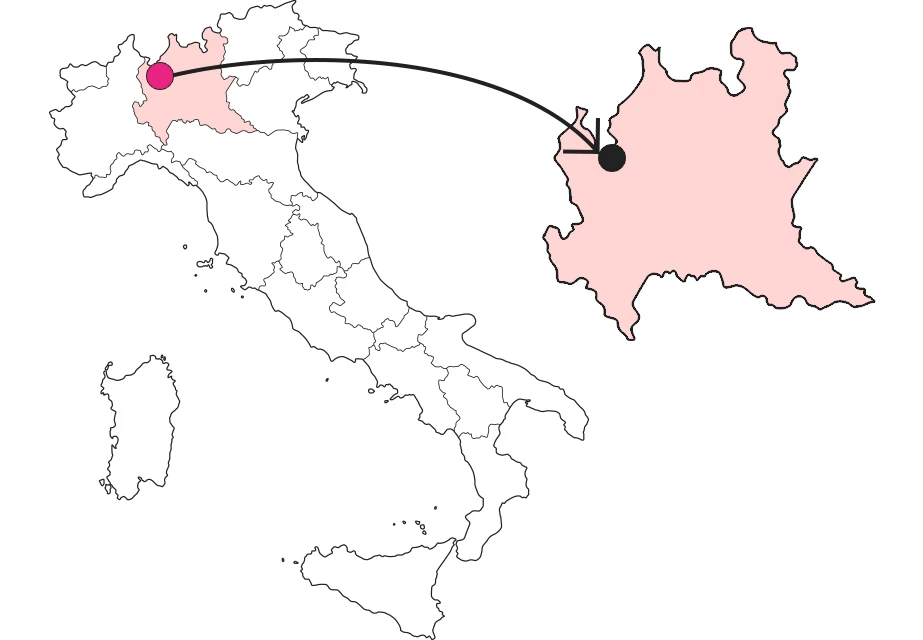SHARRYLAND


The Jubiana da Canz
The last Thursday in January, a rite of passage between the old and new year


Where is

The ritual of the Jubian is celebrated in Canzo in January.
In Canzo, the village prepares for an ancient ceremony steeped in mystery and symbolism: the ritual of the Jubiana. It is the last Thursday in January, a day filled with expectation, when the entire community comes together with a deep awareness and a rooted confidence in the truthfulness and validity of this ritual of passage.
The origins of the ritual
The choice to celebrate the event in January is not accidental. The very name of the month comes from the Latin "consecrated to Janus," the Roman god of beginnings and passage. It is a time when Mother Nature, having reached the end of her annual cycle, takes on the appearance of a decrepit old woman. The community, with the knowledge that only through her "sacrifice" can the transition from the old year to the new one be facilitated without trauma, decides to burn her in order to get rid of all the accumulated evils.
Symbology of a millennial ritual
The key elements of this millennial ritual are fire and metallic sound. Fire, with its flaming dance, performs a dual function. On the one hand, it drives away negative elements related to field work, such as disease, hail, and drought. On the other, it stabilizes and revitalizes the growth and health of nature, preparing it for the spring awakening. The metallic sound, perhaps related to the mysterious art of metalworking, is believed to ward off evil.
Who is the Jubana
The history of the "Giubiana de Canz" has been patiently reconstructed by the "Cumpagnia di Nost," an association passionate about local traditions. The Giubiana itself, a puppet dressed in black with a red leg, becomes the sacrificial symbol for the end of the old year and the renewal of the new season. She holds the spindle and distaff in her hand, recalling the Greek goddesses Moire, symbols of the natural cycle of life and death.
What happens in Canzo? The procession to the "court"
The event features a fascinating procession through the village, during which the Giubiana travels through the historic streets on a cart accompanied by the Executioner. Dressed in black and white, "bagaj and tusan" (light and darkness) accompany the route, invoking beneficent forces and chasing away the negative with the ringing of bells and the din of cans. The contrast between black and white is evident, representing the conflict between good and evil.
Thestart is from the Chapel of San Rocco, from which the procession descends to Villa Meda. At the gate of Villa Meda from a ledge the "Diauj dala bela vus" (the devils with a beautiful voice) wrapped in a red cloak dedicate a ramshackle and provocative ode to the Jubian. The procession reaches a small square where the "Strìepicitt," small witches dressed in black and red, burst in. They light a fire and dance like possessed women to the frenzied rhythm of drums. The procession is a whirlwind of sounds, colors and movements, creating an atmosphere of unbridled energy.
The other characters: nature arrives
The Giubiana is impersonated by a masked man during the procession, later replaced by a puppet made of rags and straw for the burning. The event continues with the appearance of beneficent figures such as the Anguana, the Selvadigh (Wild Man) and the Cervun (deer), who with natural symbols drive away witches and celebrate the cycles of nature. They then dance with the "Bianch" (children dressed in white). The drum roll resumes, the "Urzu" (Bear) comes running in, causing the beneficent characters to flee and begin a fight with the "Casciadur" (the hunter), who eventually tames him and locks him in a cage. The ritual action of these two figures highlights the clash between what is wild and what is humanized, between Nature and Culture.
The Trial and Judgment
The ritual takes on a theatrical character during the symbolic trial in the square, where the Jubuana is accused of the negative events of the past year. Witnesses recount her "sins," and the advocate of lost causes tries to defend her. The Council of Elders passes the final judgment, condemning the Jubian to be burned at the stake.
The procession resumes and in front of the Church of St. Francis the "Strìe" say goodbye for the last time to the Giubiana, who attempts to flee but is chased and caught by the Executioner. It is the "Urzu" who instead succeeds in his escape and returns to his own environment, leaving the man with the illusion of having tamed him.
The burning: a new beginning
The puppet is burned to the joy and merriment of the whole community: from the way it burns and the manner in which the smoke is spread, auspices of good or bad luck are drawn. The ceremony ends with a community banquet, where mulled wine and sausage risotto symbolize the auspiciousness of good fortune and abundance for the coming year. The Giubiana, a symbolic sacrifice, dissolves in the flames, taking with it the ills of the past year and opening the door to a new beginning.
Enter the Map of Italy's Undiscovered Wonders and find treasures where you least expect it... Inspire, Recommend, Share...
Collections


